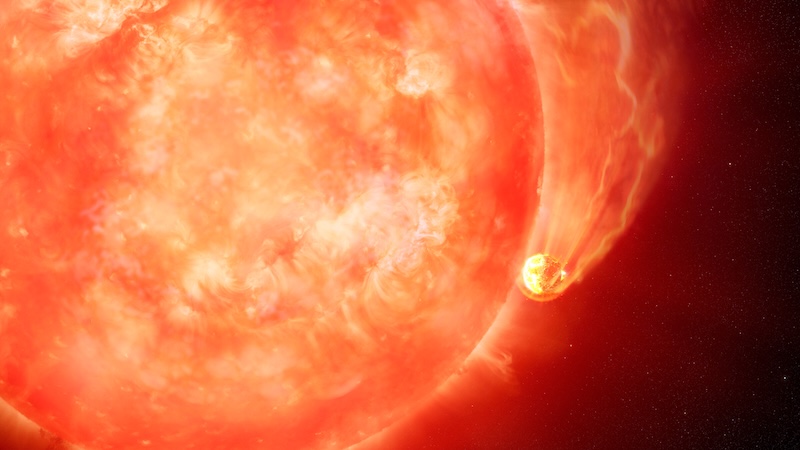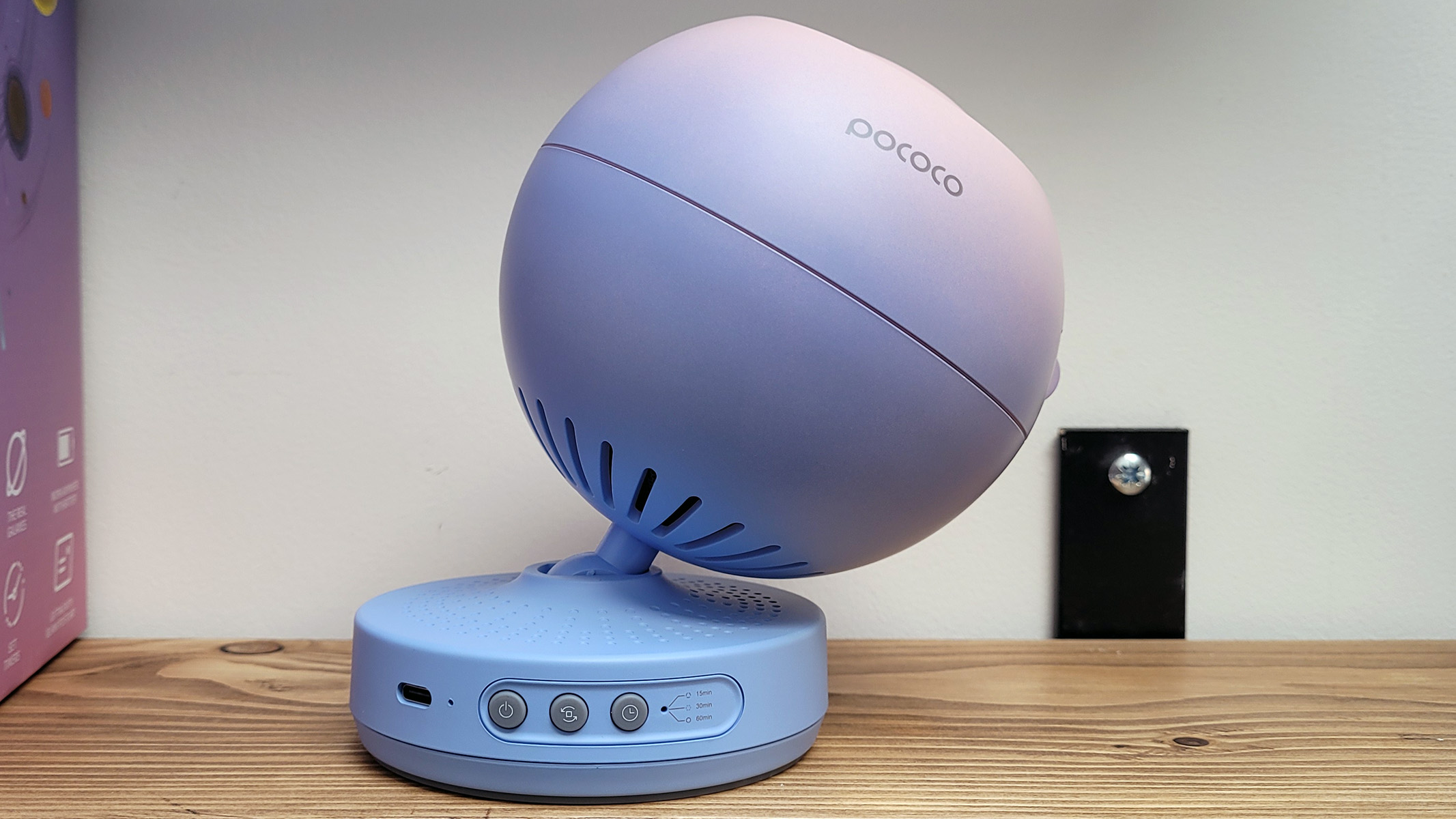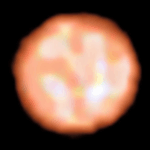Now Reading: NASA’s DART mission unleashed a blitz of boulders into space
-
01
NASA’s DART mission unleashed a blitz of boulders into space
NASA’s DART mission unleashed a blitz of boulders into space
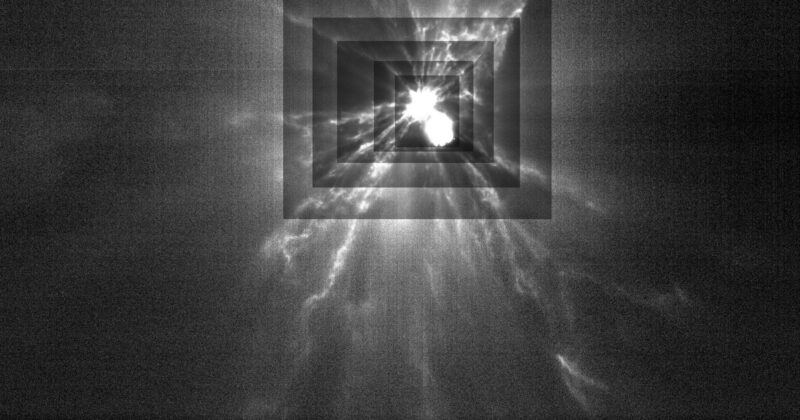

University of Maryland astronomers released this news on June 7, 2025. Edits by EarthSky.
When NASA’s DART spacecraft slammed into the asteroid moon Dimorphos in September 2022 – with the aim of testing whether we could deflect an asteroid – the craft didn’t just change the asteroid’s orbit as intended. It also unleashed a massive barrage of boulders that carried more than three times the momentum of the spacecraft itself.
A University of Maryland-led team of astronomers found that, while the mission successfully proved that kinetic impactors like the DART spacecraft can alter an asteroid’s path, the resulting ejected boulders created forces in unexpected directions that could complicate future deflection efforts. According to the team’s new paper published in the Planetary Science Journal on July 4, 2025, using asteroid deflection for planetary defense is likely far more complex than researchers initially understood. Tony Farnham, lead author of the paper and a research scientist at UMD’s Department of Astronomy, said:
We succeeded in deflecting an asteroid, moving it from its orbit. Our research shows that while the direct impact of the DART spacecraft caused this change, the boulders ejected gave an additional kick that was almost as big. That additional factor changes the physics we need to consider when planning these types of missions.
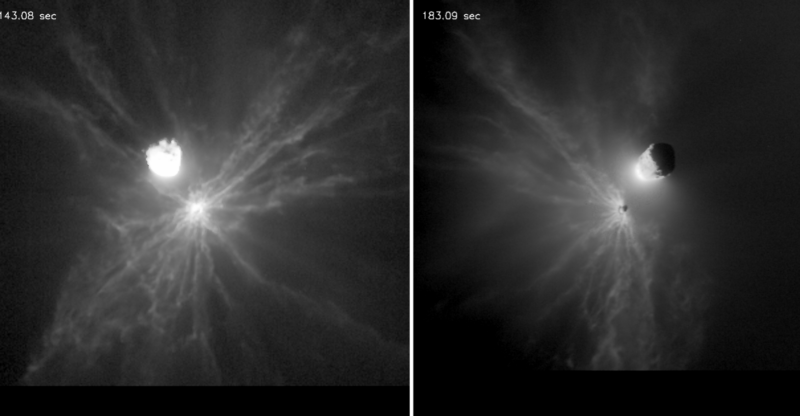
Not scattered randomly
The team used images taken by LICIACube, a small Italian spacecraft that followed along with DART in space and observed its aftermath. They tracked 104 boulders ranging from 0.2 to 3.6 meters (.7 to 12 feet) in radius as they shot away from Dimorphos at speeds up to 52 meters per second (116 miles per hour). From those images, the team determined 3-dimensional locations and velocities of the ejected rocks. Farnham said:
We saw that the boulders weren’t scattered randomly in space. Instead, they were clustered in two pretty distinct groups, with an absence of material elsewhere, which means that something unknown is at work here.
The largest debris cluster, containing about 70% of the measured objects, was ejected toward the south at high velocities and shallow angles to the surface. The team believes that the ejected boulders likely came from specific sources, perhaps from larger boulders on Dimorphos that were shattered by DART’s solar panels just before the main body of the spacecraft hit the surface. Jessica Sunshine, a professor of astronomy and geology at UMD, and the paper’s 2nd author, said:
DART’s solar panels likely hit two big boulders, called Atabaque and Bodhran, on the asteroid. Evidence suggests that the southern cluster of ejected material is probably made up of fragments from Atabaque, a 3.3-meter-radius (11-foot-radius) boulder.
Dart mission vs. Deep Impact
Sunshine also served as deputy principal investigator for the UMD-led NASA Deep Impact mission, which involved intentionally crashing a spacecraft into comet Tempel 1 to study its interior composition. She said compared DART’s results with Deep Impact’s, noting how surface features and target composition fundamentally shape impact outcomes. She explained:
Deep Impact hit a surface that was essentially very small, uniform particles, so its ejecta was relatively smooth and continuous.
And here, we see that DART hit a surface that was rocky and full of large boulders, resulting in chaotic and filamentary structures in its ejecta patterns. Comparing these two missions side-by-side gives us this insight into how different types of celestial bodies respond to impacts, which is crucial to ensuring that a planetary defense mission is successful.
The momentum from the DART impact’s ejected boulders was primarily perpendicular to the spacecraft’s trajectory, meaning that it could have tilted Dimorphos’ orbital plane by up to 1 degree and potentially sent the asteroid tumbling erratically in space.
The team’s work on understanding the effect of the boulder debris will be key to the European Space Agency’s Hera mission, which will arrive at the Didymos-Dimorphos system in 2026. Farnham said:
Data gathered from LICIACube provides additional perspectives on impact events, especially as DART was originally designed to solely rely on Earth-based observations. Hera will do the same by giving us another direct view of the impact’s aftermath, relying on the predictions we’ve made using data gathered from DART.
Farnham noted that these multiple perspectives and closeup images from LICIACube gave the DART team information that would have been impossible to detect from Earth, including data on the asteroid boulders. This new study suggests the importance of considering those variables in planning future asteroid deflection missions. Sunshine added:
If an asteroid was tumbling toward us, and we knew we had to move it a specific amount to prevent it from hitting Earth, then all these subtleties become very, very important. You can think of it as a cosmic pool game. We might miss the pocket if we don’t consider all the variables.
Bottom line: Space rocks ejected during NASA’s DART mission – to test whether we could deflect an asteroid from its path – carried three times more momentum than the spacecraft itself.
Source: High-speed Boulders and the Debris Field in DART Ejecta
The post NASA’s DART mission unleashed a blitz of boulders into space first appeared on EarthSky.
Stay Informed With the Latest & Most Important News
Previous Post
Next Post
-
 012024 in Review: Highlights from NASA in Silicon Valley
012024 in Review: Highlights from NASA in Silicon Valley -
 02Panasonic Leica Summilux DG 15mm f/1.7 ASPH review
02Panasonic Leica Summilux DG 15mm f/1.7 ASPH review -
 03How New NASA, India Earth Satellite NISAR Will See Earth
03How New NASA, India Earth Satellite NISAR Will See Earth -
 04And Thus Begins A New Year For Life On Earth
04And Thus Begins A New Year For Life On Earth -
 05Astronomy Activation Ambassadors: A New Era
05Astronomy Activation Ambassadors: A New Era -
06SpaceX launch surge helps set new global launch record in 2024
-
 07Space Force plans new ‘Futures Command’ amid pressure to speed up modernization
07Space Force plans new ‘Futures Command’ amid pressure to speed up modernization













